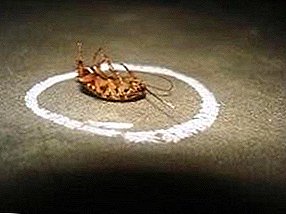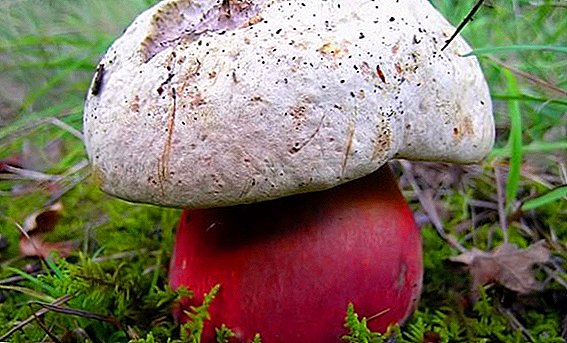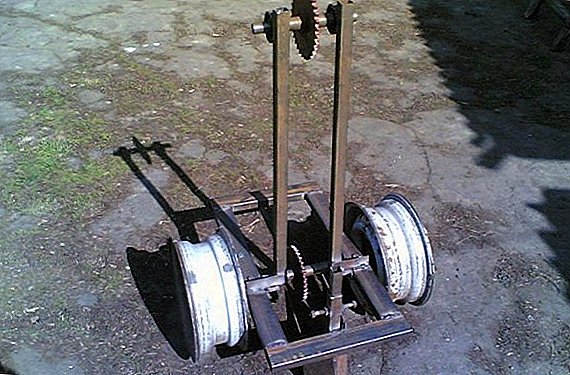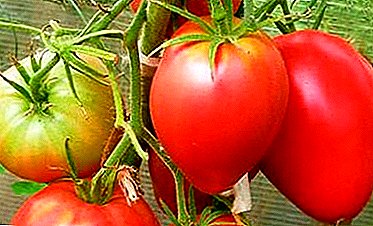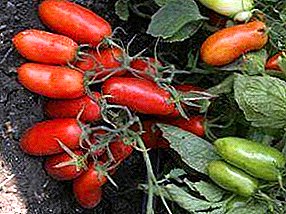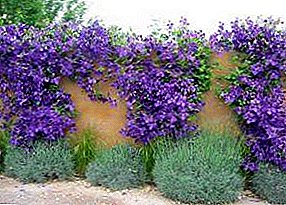
Clematis - an incredibly beautiful and tender bright-flowering liana, capable of creating a cozy atmosphere in any garden and filling it with positive energy.
Since clematis is a climbing plant, it needs proper support for proper growth and lush flowering.
The first requirement for a support is strength.
Clematis grows rapidly and gains quite a lot of weight, and after the rain the mass of the flower garland increases several times.
Clematis leaves and petioles have a feature at a young age to cover the support. Old leaves do not have this ability. This nuance should be taken into account when choosing a support: those parts of it that the plants will cling to should not exceed 1-2 cm in diameter, otherwise clematis will not be able to cover them. Besides, clematis prefer rough supports.
You can buy a ready-made support or a trellis, or you can make it yourself.
Beautifully on the gazebos looks small-flowered clematis.
Find out here how to plant clematis.
A scarecrow made with their own hands will decorate the garden and drive away the birds: //rusfermer.net/postrojki/sadovye-postrojki/dekorativnye-sooruzheniya/delaem-ogorodnoe-chuchelo-svoimi-rukami.html
Required materials for the manufacture of supports
In the manufacture of supports for clematis with their own hands usually use metal, wood or improvised means, such as poles and branches.
For the manufacture of metal supports (for example, arches) will need:
- metal rods with a diameter of 1 cm;
- pipe with a diameter of 3 cm;
- and concrete.
To make wooden supportuseful to:
- wooden beam 22-23 cm long;
- wooden slats 25 × 60 cm. (in the amount of 8 pieces) 25 × 180 cm. (4 pieces), 25 × 15 cm. (2 pieces);
- as well as nails, hammer, glue and handsaw.
For creating handicap support need to prepare:
- high poles (4 pieces);
- flexible rods or vine;
- twine and ax.
How to make a prop?
Wooden support
 To make a wooden support for clematis, the bars of the above dimensions are instilled into the ground to a depth of 40-50 cm, keeping a distance between them of 60 cm.
To make a wooden support for clematis, the bars of the above dimensions are instilled into the ground to a depth of 40-50 cm, keeping a distance between them of 60 cm.
The distance between the bars is sewn up with a mounting plate depending on the fantasy and the wishes of the author: either in a figure or in a classic cage.
The two smallest slats (25 × 15 cm) are used to form the inner frame, the other twelve are used to make the grille.
For better rigidity and stability of the design make fasteners between the frames, as well as nailed on top of the horizontal bar. At the end of the support is covered with varnish or paint.
Get a good gazebo in the country, if properly form the vine.
When to set traps for bees, read by clicking on the link: //rusfermer.net/bee/info/newbie/kak-pojmat-pchelinyj-roj-vybor-vremeni-mesta-i-sredstv.html
Improvised support
The construction of a support from improvised means will not require a significant amount of time or financial costs.
 Poles stick into the ground with pointed ends and set vertically in the form of a circle.
Poles stick into the ground with pointed ends and set vertically in the form of a circle.
The twigs or the vine are closely intertwined around them. There are two such rings to make, and if a vase is supposed to be supported, the rings are made of different diameters.
Then the position of the rings is determined, and they are fixed with a string. If necessary, carry out the adjustment of the height of the poles.
Another variant of the simple support is the construction in the form of a cone. On the ground there is a square, in the corners of which are stuck long strong sticks.
Along the perimeter of the square add a few more of the same sticks, all the tops are connected and connected. With the help of small sticks a lattice is created on the sides of the cone. This support is used for more miniature varieties of clematis.
Excellent support for clematis can be made from a large mesh mesh of a chain-link.
 To do this, at the required distance from each other, two pillars are dug into the ground, and between them the net of the grid is tightened and secured with wire or hooks.
To do this, at the required distance from each other, two pillars are dug into the ground, and between them the net of the grid is tightened and secured with wire or hooks.
Rabits better to use galvanized or plasticized.
Soon clematis will completely curl the net and hide it from view, forming a living flower wall.
It is possible not to invent any constructions at all, but simply to decorate with a clematis a wall of an arbor, a bath or a summer kitchen, which will serve as a support for the plant.
To do this, nails are hooked into the upper part of the wall or hooks are fastened, and the clematis growing at the bottom is tied up with a string and fixed to them.
Plants must be tied up at 20 cm from the ground, because it is in this place that they can break under adverse weather conditions.
Arch for clematis do it yourself
The range of various supporting structures for clematis is impressive, but the title of the best arch deserves the best. Especially great looks entwined with the arch at the beginning of the garden path.
 A metal bar with a diameter of 1 cm and four pipe lengths of 3 cm in diameter are required for the manufacture of the arch.
A metal bar with a diameter of 1 cm and four pipe lengths of 3 cm in diameter are required for the manufacture of the arch.
Initially, the two halves are welded, which, after the construction of the arch, are bolted together.
Pipe sections going to erect arched supports are installed in the ground and poured with concrete. Similar arches are installed along the track at a meter distance from each other.
To create additional supports, cross-strips with a 50-centimeter distance are welded between the arches. After installing the arch is recommended to paint it in green.
Read on our site features landing and care for Bruner.
See photos of the beautiful flower - Badan: //rusfermer.net/sad/tsvetochnyj-sad/vyrashhivanie-tsvetov/badan-znakomyj-neznakomets-na-priusadebnom-uchastke.html
How to tie a clematis, so that it curls beautifully on the support?
The choice of different materials for fixing clematis stems is unlimited. Regularly, it is necessary to check the condition of the garter: whether it is rotten, whether it is tightening shoots and whether it is in place.
 The most popular material for garter clematis is twine (rope).
The most popular material for garter clematis is twine (rope).
A great alternative to ordinary twine - colored twine, which allows you to perfectly hide the attachment points of plants to the support.
Twine and raffia are ideal for garter soft shoots. For woody stems wire loop is better suited.
The paper-covered cord is very good for container-grown clematis. It is convenient because it can be easily removed when it is no longer necessary.
When choosing a support, you must remember that it must be not only comfortable and durable, but also aesthetic.
In addition, you need to pay attention to the biological characteristics of different varieties of clematis.


 Beautifully on the gazebos looks small-flowered clematis.
Beautifully on the gazebos looks small-flowered clematis. Get a good gazebo in the country, if properly form the vine.
Get a good gazebo in the country, if properly form the vine. Read on our site features landing and care for Bruner.
Read on our site features landing and care for Bruner.
